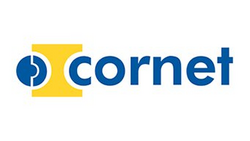SecAnda - Use of secondary andalusite raw material in refractories
Laufzeit: 01.12.2023 - 30.11.2025
Partner: Forschungsgemeinschaft Feuerfest e. V. (FGF), Institut Interuniversitaire des Silicates, Sols et Matériaux (INISMa), Almatis GmbH, Beck u. Kaltheuner GmbH & Co. KG, Chemikalien-Gesellschaft Hans Lungmuß mbH & Co. KG, EKW GmbH, Imerys Technology Center Austria GmbH, Austria, Knöllinger Keramische Verschleißteile GmbH, Refratechnik Steel GmbH, Weerulin GmbH
Förderkennzeichen: IGF-Vorhaben-Nr.: 368 EN
Förderung durch: BMWK über AiF
Projektmittel (€): 250.000
Kurzfassung
Andalusite-based refractories are vital for a significant range of applications in process industries, e.g. iron, steel and cement production, but also for energy industries like biomass incineration and thermal waste treatment. The availability of primary andalusite – especially the coarse grain fraction of andalusite – is decreasing due to finite natural resources and consistent to increasing demand.
The objective of this proposed project is thus, on a scientific level, to investigate the...Andalusite-based refractories are vital for a significant range of applications in process industries, e.g. iron, steel and cement production, but also for energy industries like biomass incineration and thermal waste treatment. The availability of primary andalusite – especially the coarse grain fraction of andalusite – is decreasing due to finite natural resources and consistent to increasing demand.
The objective of this proposed project is thus, on a scientific level, to investigate the extent to which secondary andalusite (especially the coarse grain fraction) can be reused as a secondary raw material for andalusite based refractories, both unshaped and shaped.
The overall innovation target of the proposed project is to enable the use of secondary coarse grain andalusite raw materials in andalusite based refractories, both shaped and unshaped. This cannot be done today because of two main factors that are hindering the refractory industry to increase the use of secondary andalusite raw material. Firstly, the interaction of the soluble impurities caused by the recycled raw materials with the refractory material in terms of manufacturing properties, which is especially valid for castables. This often results in a strongly reduced flowability of the refractory castables, in an accelerated or delayed setting of the castables, or insufficient strength development during setting. To solve this problem, the manufacturing properties of refractories containing secondary andalusite must be understood better. Secondly, the application properties (in case of andalusite based refractories thermal shock resistance, volume stability and corrosion resistance) are influenced by the raw materials. Even when using secondary coarse grain andalusite raw materials, the excellent application properties of andalusite based refractory must still be guaranteed, regardless of the state of the secondary coarse grain fraction. It is necessary to know which amounts of secondary raw materials may be used, or how far they may have been decomposed during previous use, to achieve a certain degree (or the maximum) of the required application properties.
The outcome of the project will be, for andalusite-based refractories (both castables and shaped products), a better understanding of the correlation between the use of secondary andalusite raw materials (with a thermal and corrosive history) and the requested properties of refractories made thereof. For refractory producers, this means that they will be able to offer andalusite-based refractories with their superior performance, even if the supply of primary andalusite raw materials diminishes. For refractory users (process and energy industries), this will result in continuously high performance of their processes.
Cost effectiveness, i.e. cost savings, result from the elimination of long transport routes (mostly from overseas) for primary raw materials. Cost effectiveness is also achieved as the technology and the companies to recycle andalusite are already well established. No additional costs for recycling technology are necessary. Cost effectiveness will furthermore be achieved by using collective RTO laboratories, as compared to research work at each refractory producer separately. Cost effectiveness will also be achieved by multiplying the results into industry, without multiplying the costs. Other salient benefits may include savings in terms of landfilling and conveying costs, environmental levies, as well as goodwill from environmental stewardship.» weiterlesen» einklappen


